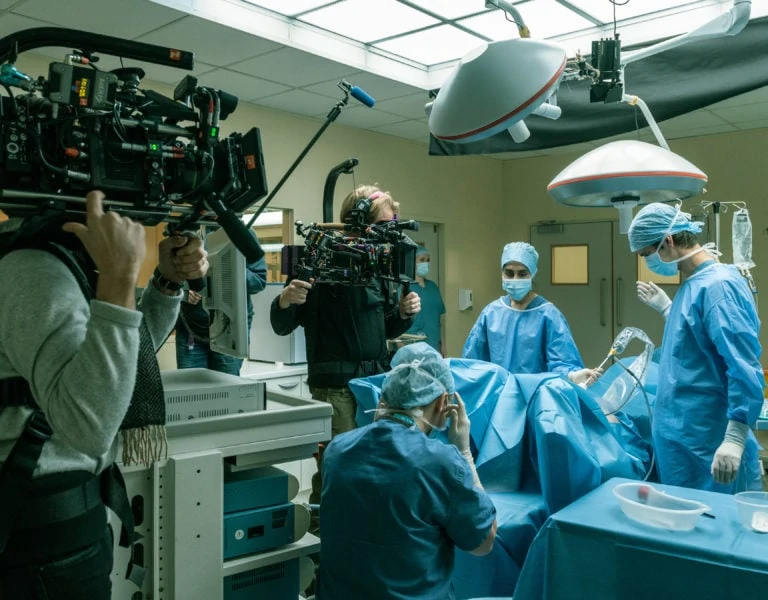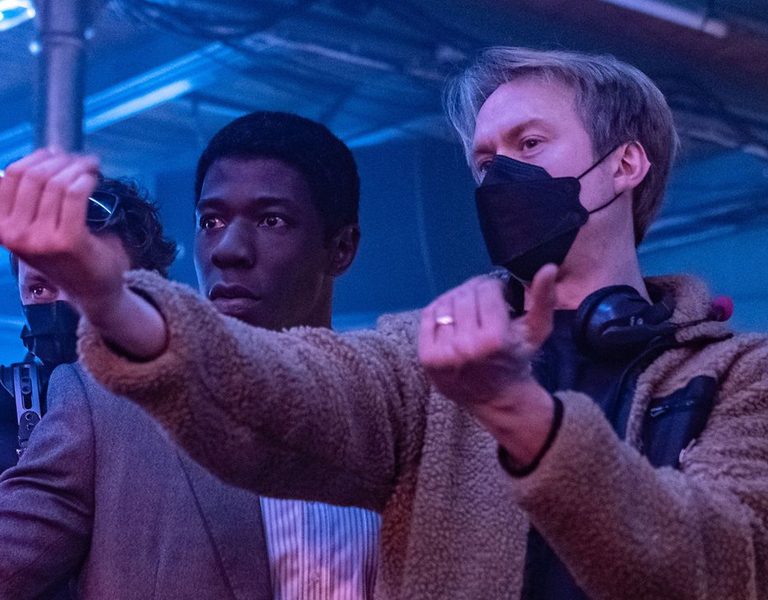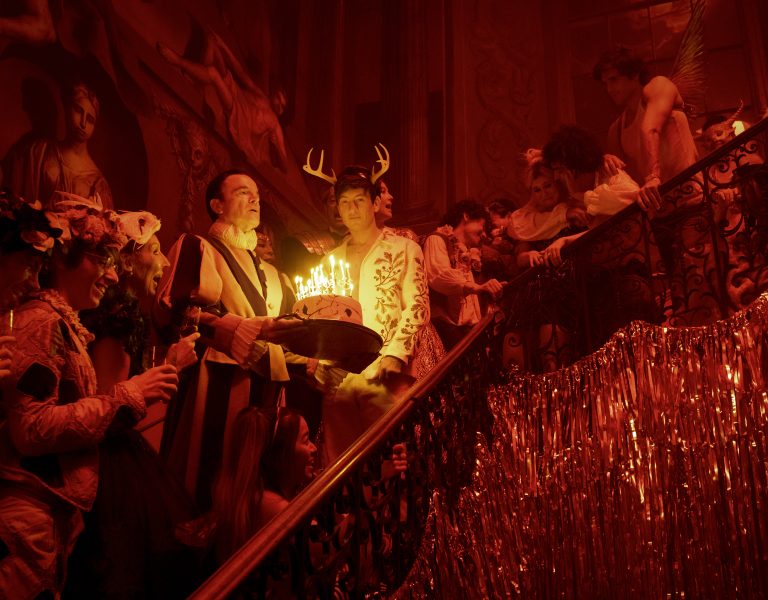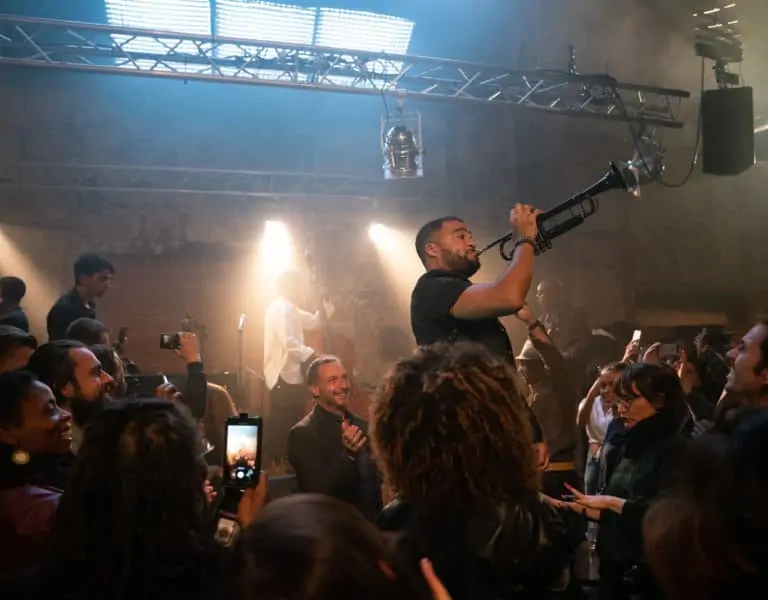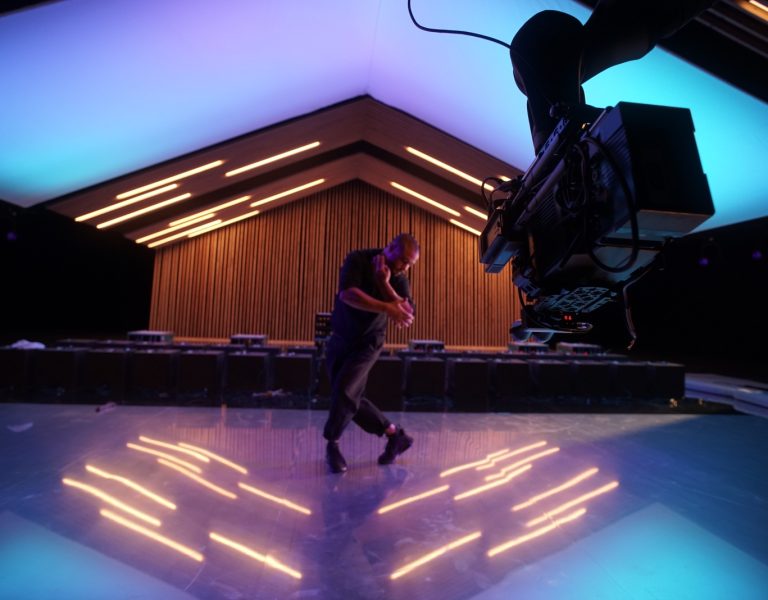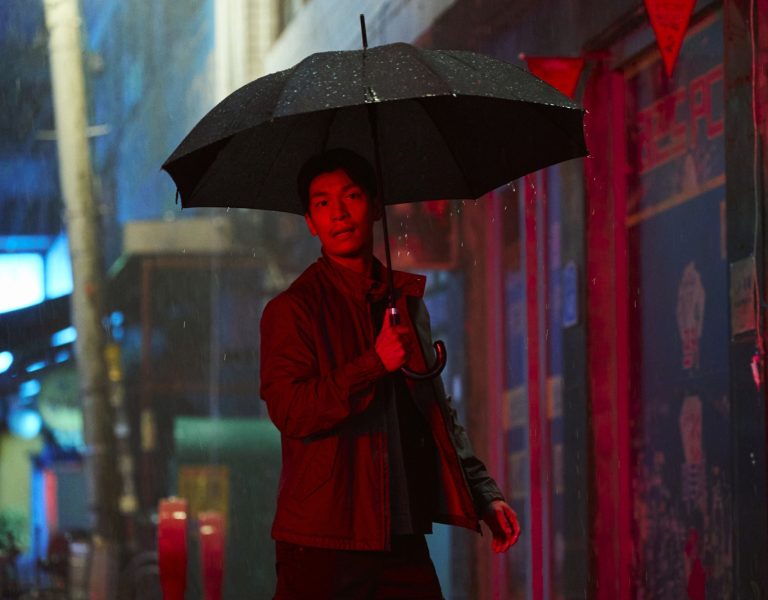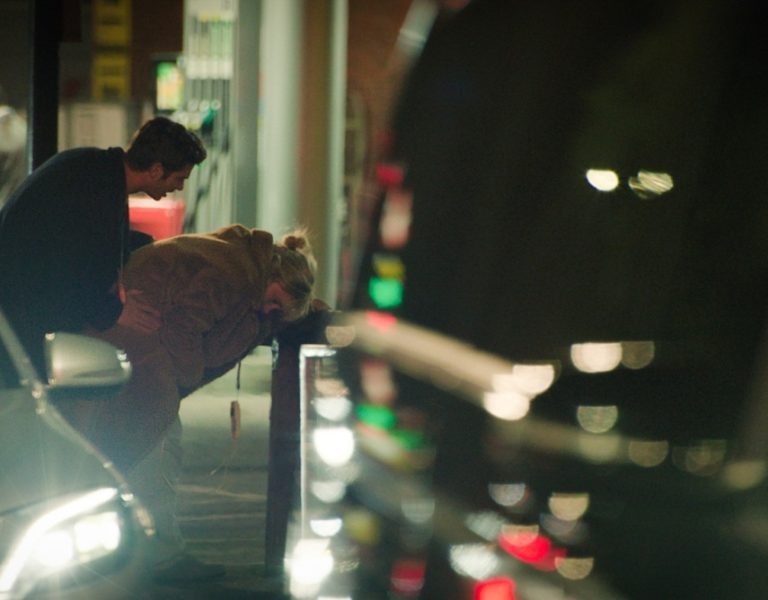PULLING THE STRINGS
Benedict Spence BSC details the technical challenges of Eric, focusing on maintaining continuity across scenes filmed in New York City and Budapest.
I was thrilled when I was first given the script for Eric. My friend and long-term director collaborator Lucy Forbes said it was a mystery thriller, all set in 1980’s New York City, following a puppeteer as he searched for his lost son. Oh and there was a 7ft high blue monster puppet which follows him around too!
Having a 1980s New York as a backdrop was a dream come true. The colour and texture of that world offered an amazing and varied pallet. The show covers all parts of NYC at the time, from family apartments to police stations, to seedy clubs, to millionaires’ apartments, and even shanty towns built within the NYC subway.
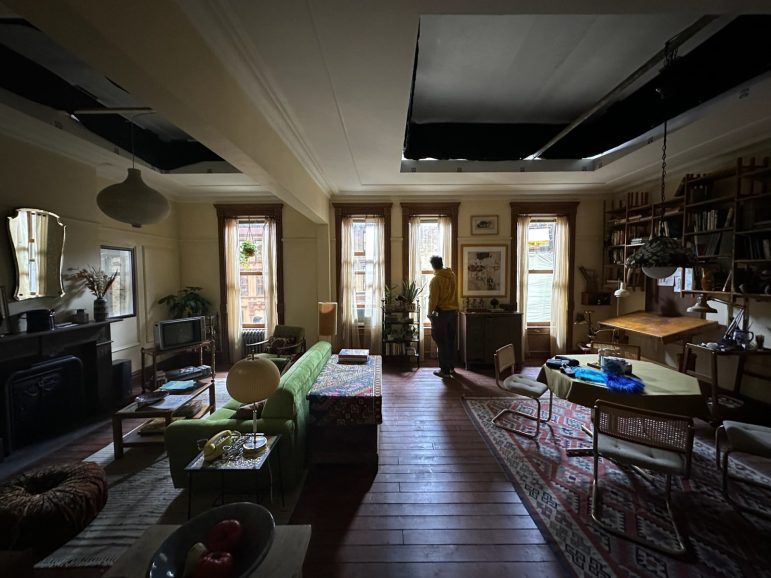
Lucy and I both like to keep our camera setup simple. We went with the newly released Alexa 35. I wanted to inject a lot of colour into the world of Eric and knew that the new sensor would allow me to do that without complication. Also, I like to use practicals a lot on set, to light the space and motivate my lighting. The extra highlight retention of the Alexa 35 means that any practicals in vision simple will not clip! We paired the camera with a set of ZEISS Supreme Primes. Designed for Full Frame, they produce a very nice image in Super 35, with less vignetting then S35 designed lenses, a very pleasing not-too-sharp of an image. We also carried a Fuji 19-90 Cabrio zoom. I was keen to make sure the audience knew when they should be paying attention to clues (and/or red herrings) so we put the Fuji on for those moments, adding a subtle optical zoom. The lens being small enough to pop on and off the camera when needed.
We also carried a Betacam SP, with an up converter and an HD recorder. I wanted to use the camera’s old sensor and stay in its analogue world as much as possible, but bypass the old tape heads. I paired it with a more modern HJ11 lens. This was used both for sourcing images for the TVs in our story, but also for the occasional full frame, non-diagetic, moment. The setup worked so well the series opens with a shot from it.
One of the biggest complexities of shooting the show was the sheer length of the shoot. And because of that, shooting scenes which sat next to each other on the page, but were shot 4000 miles and five months apart. Most of the interiors were shot in Budapest, Hungary at the start of 2023 and the majority of the exteriors were shot in New York and New Jersey in May 2023!
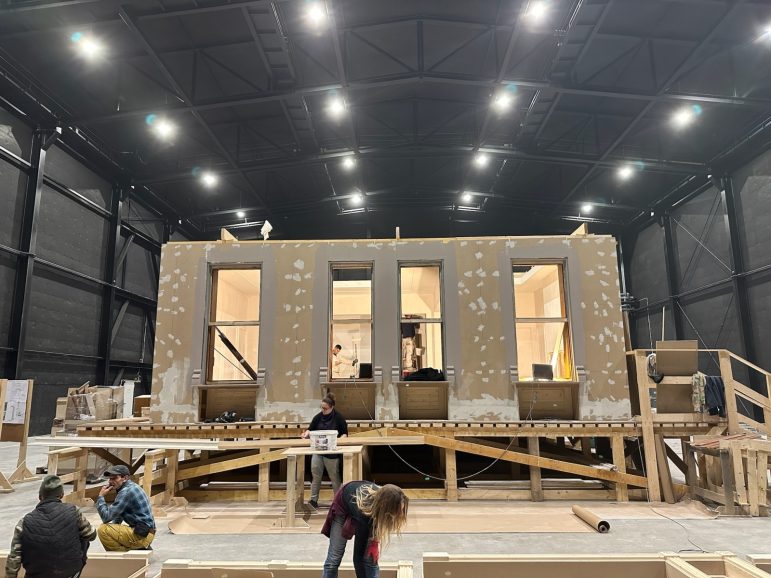
The Anderson Family hero apartment was one of the first sets we shot in the schedule, we were in there for around 2.5 weeks. It was where Vincent (Cumberbatch), Cassie (Hoffman), and their son Edgar (Howe) all live at the start of the show and across the 6 hours of story we revisit time and time again. For me the challenge was to both to spec out the set build, so that we could generate all the different times of days, moods and weather that the script needed. But also to try and plan all that round a set of exteriors which we would be shooting 4 months later in the USA.
The apartment itself was built at Astra Studios, just outside Budapest by designer Alex Holmes and his team. It was around 2,500 sq ft and built up a level, which allowed us to have stairs leading up to it, built into the set. We had a custom 60ft Rosco SoftDrop created for us from photos taken at the real exterior location in New Jersey, as well as a pair of more generic soft drops as the sides and back of the set build. It was my first time using a SoftDrop; you can front light it to create a day look or backlight it and it magically turns into a night scene. (Or do a bit of both for dusk!). They are pretty amazing things. Outside the windows of the set build we placed rows of ARRI SkyPanels, with soft boxes on them, both facing towards the backdrop and towards the windows of the set, which would act like a soft skylight. And we had four SkyPanel 360’s on long john silvers for when we wanted to push more light deeper into the set. We also had a small cherry picker with another 360 and a 4KW daylight Fresnel.
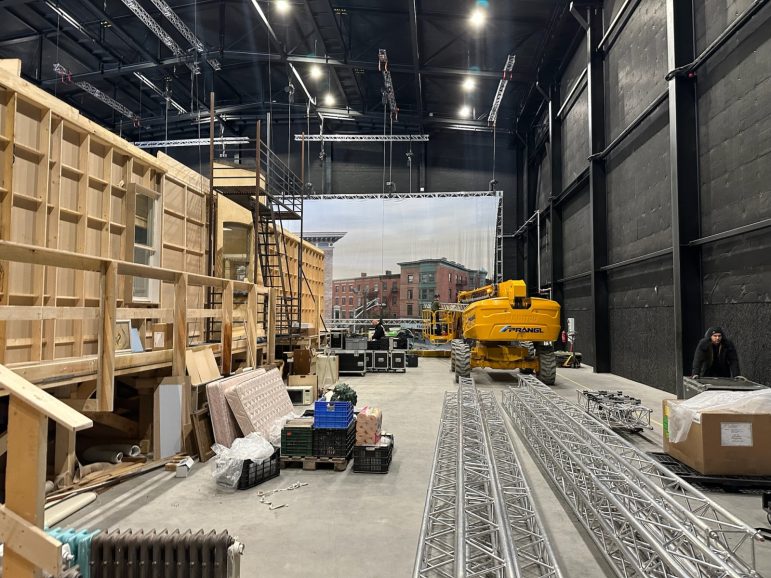
I also asked for hatches to be cut into the set build ceiling so I could put soft boxes above the set ceiling. When shooting on a set-build I try very hard not to “cheat” with my lighting. Its very easy to place lights in places where you would never be able to in a real location. However, soft boxes can be incredibly useful I find. It’s very rare that I key with them, but they can put a little ambience in a room in a very subtle way. We had 5 soft boxes in total, each of them with a number of Astera Titan tubes in them, behind a 1/2 silk. I selected the titan tubes because I knew I’d never need a huge volume of light, but also because they can reach very high colour temperatures easily, while retaining a good CRI, and having a number of units would allow me to swing the hotspot across the face of the softbox. I kept the soft boxes on for the majority of scenes, adding a little ambience. For night interiors, which were mostly washed with tungsten from the practicals, the soft boxes allowed me to add a touch of coolness to the shadows, and for the darkest scenes, they allowed me to retain detail in the shadows of the image.
Of course, we also had some practical lamps on our set, chosen by Alex and set dresser Andrew Baseman. I worked closely with Andrew and we tried to pick lamps which were period and character appropriate, but also lamps which could light the faces of our cast and/or motivate their lighting. I filled these with Astera NYX bulbs where I could, but a large number of them could only take simple tungsten bulbs. One of the key practicals I was fixated on was above the dining room table. There were are number of scenes in episode one especially, which were set around this table. Art department had found a lovely lampshade, which they and director Lucy Forbes were in love with. Unfortunately, it had a single bare bulb in it. Not great for lighting faces! After much head scratching, and a very helpful prac spark team, we managed to fit a Rosco Dash, along with a Rosco Dot diffuser into the lamp. This gave us a soft-ish, and fully controllable lamp for those key scenes.
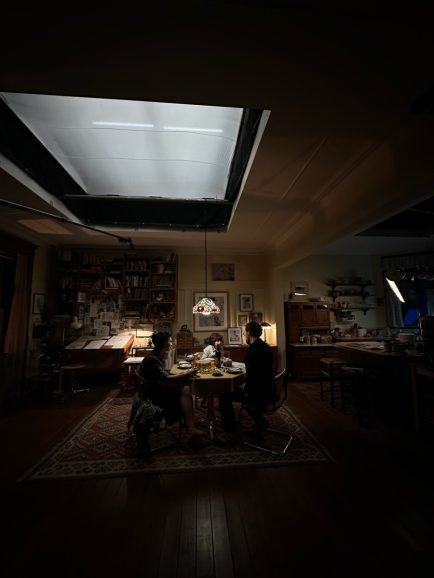
With all these fixtures at my disposal, both practical and not, the next step was to decide what scene should have what mood. Time of day and weather are the big decisions here, both can push and pull the mood of an interior. Some were baked into the script, some were more up for grabs. I often do what I call a Day/Dusk/Night pass on the script, trying to see if there is a way of pushing time of day a little in the script to get a more interesting visual or a more fitting mood. This takes input from the director and the 1st AD to ensure certain things are achievable. One of the fantastic things about having a set build like this is the ability to hold a dusk interior, for example, across hours of shooting. With the LEDs outside the set pushing 15,000K cool blue light into the set, and our pracs all slightly dimmed or set to 3000k you can produce a perfect dusk without any of the stress of shooting actual dusk. Of course, when we were shooting in NYC, 5 months later, we also had to shoot dusk with all the stresses that brings on an exterior!
During our pre-lighting time on the Anderson apartment set, we came up with different moods and times of day. From glorious sunny afternoons, to miserable rainy dawns, dusks and late-night options. The base lighting for each was controlled from a lighting desk, so that a single button push could get us where we needed to be. And that kept us on schedule, and stopped me having to make compromises on the shoot day.
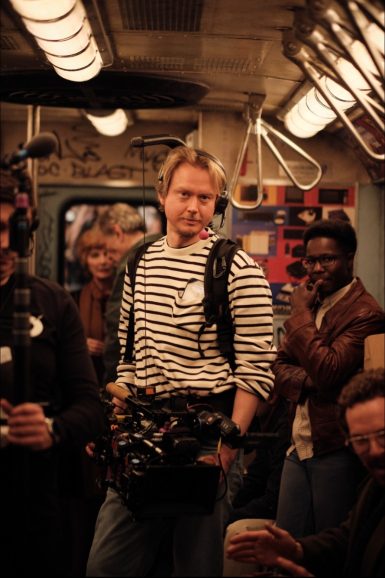
These lighting mood decisions were taken from what was on the page, if not directly from a written time of day, then at least from what the characters were going through, for what the scene needed for dramatic intent. The danger was always that we would shoot some glorious sun in Budapest in January, and that we would have a thunderstorm in NYC in May. I wish I could say we were just incredibly smart with our decisions on this, but really, I just think we got very lucky. I don’t think there are any clangers in the final show!
Aside from not “cheating” when lighting a set build I also try hard not to make things too perfect. I often think the temptation on a set is to shoot it too perfectly. For example, if the world outside the windows is a bit overexposed then we could just bring down the sky panels on the backdrop. I tried hard to fight that instinct, and light the sets how they would really look, with imperfections and broken bits, just like shooting on location. For a show such as Eric, spread across set builds and locations, 4,000 miles and five months apart, having a unity across all scenes was one of my biggest challenges!
